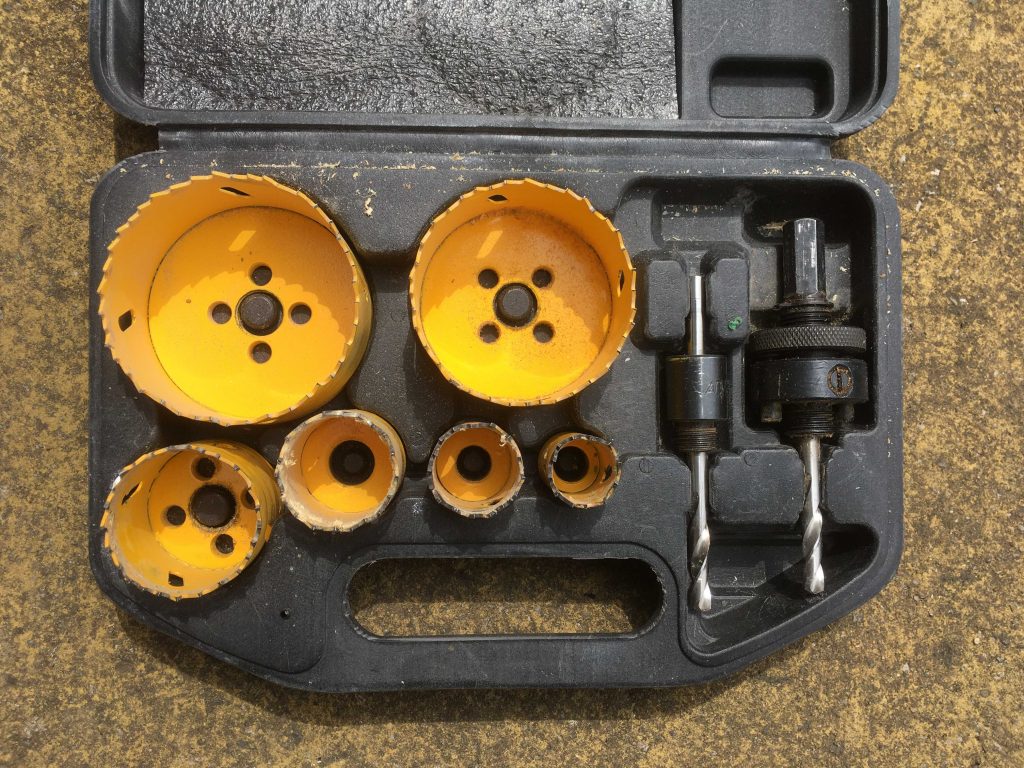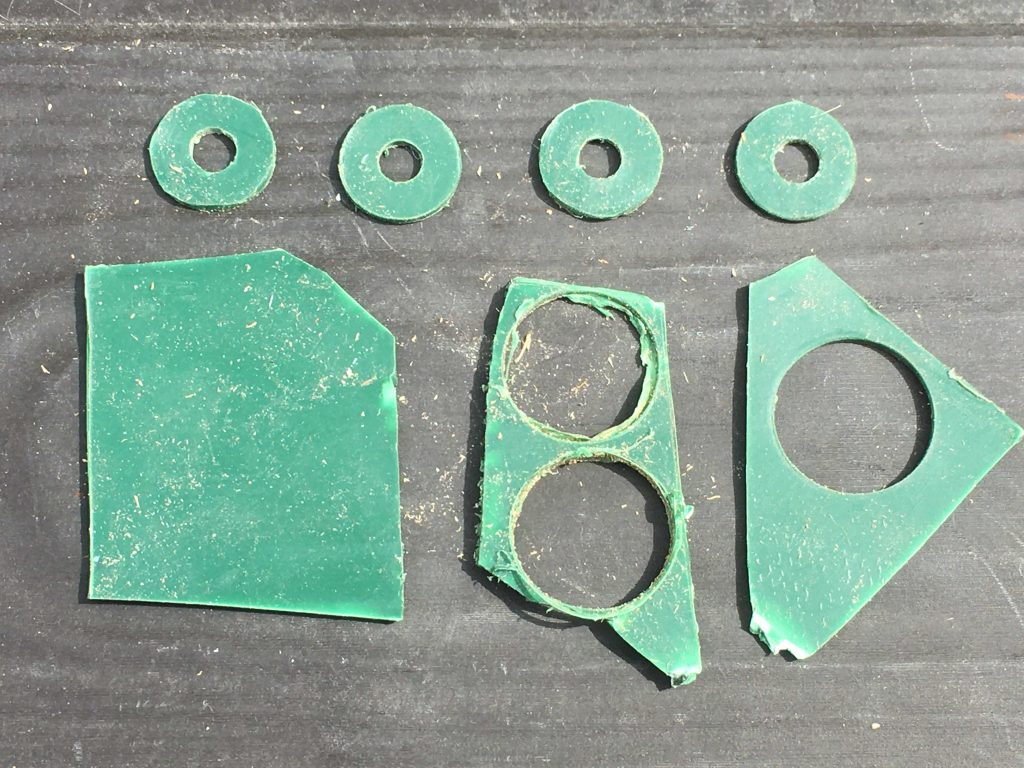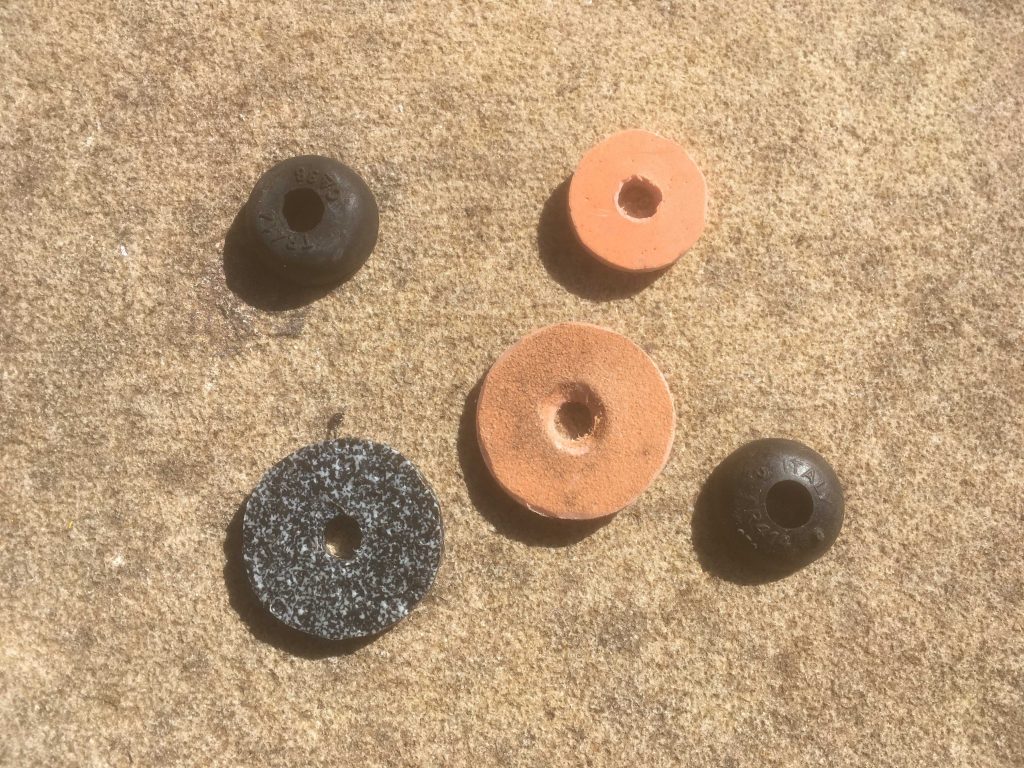By the Alchemist – turning junk into ‘gold’!
From time to time we all need non-metallic (e.g. plastic, rubber, even wood) washers. A recent example for me was bolting some steel brackets to the frame of an aluminium greenhouse. Due to the possibility of bi-metallic corrosion, especially in a wet and humid environment like a greenhouse, it is a good idea to electrically isolate the dissimilar metals with a non-conductive washer – in this case I used plastic.
While it is possible to buy plastic and rubber washers (plumbers use them as tap and joint washers etc), they can be easily made from old scrap plastic using a set of hole saws (Figure 1), whose main purpose of course is to drill large round holes in sheet materials. The waste material produced from the drilled hole is a circular disk, conveniently already with a hole in the centre (Figure 2). Such washers are usually slightly ragged at the edges, but can be easily trimmed with a sharp knife or file if necessary.



If the purpose of the exercise is purely to make washers (rather than drill a hole), it is usually better to use reasonably thick and pliable plastic, such as polyproplylene (PP), polyvinyl chloride (PVC) or high density polyethylene (HDPE) rather than a brittle material like polystyrene (PS). However, avoid using plastic which has lain outside in the sun for years, as it may have gone brittle due to extended exposure to UV radiation. I have also made excellent large washers from scrap plywood offcuts, which may be suitable for some dry application.
Although it is simple to make washers from scrap plastic, sheet rubber is not so easy to drill in the same way. However, a source of small ready-made rubber washers can be obtained from tyre depots, where they routinely replace the old tyre valves as a safety measure when fitting a new tyre. To get the old valve off the wheel, the fitters usually just slice through them with a knife, which produces the small black rubber ‘washers’ shown (top left and bottom right in Figure 3) as waste.
Super article. Enjoyed reading it.
In my previous life our Service Technicians carried sheet cork and sometimes thin sheet rubber which could be cut using scissors or a sharp knife to make a temporary or more often a permanent ‘gasket’.